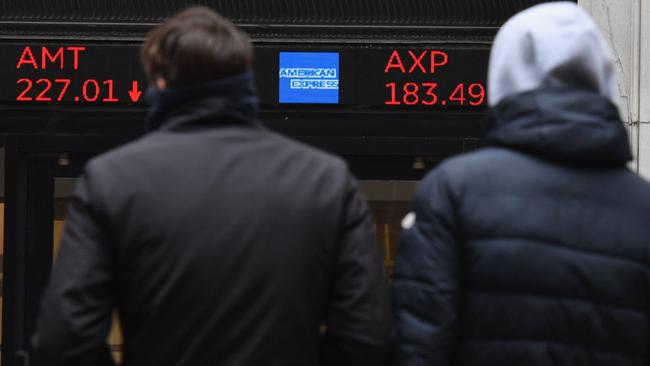
On Thursday, when news filtered through of the Russian invasion, markets plunged and the oil price went through $US100 ($140). Petrol went past $2 and seemed headed towards $2.50.
Our share market, along with the other Asian markets, was the first to respond, as Russia invaded in the middle of our trading day. It was early morning European time and heading for midnight in New York and Washington.
Some $73bn was wiped off Australian share values; when Wall St opened, it lost close to $US1 trillion – and they were real dollars, closer to $1400bn in our down under dollars.
Uh-oh, so was this another Covid implosion, another GFC, but one caused by bullets and bombs not viruses or virulent greed?
Well, waking up Saturday morning, it seemed to be a case of: implosion, what implosion?
In Friday trading, Wall St had recovered all of Thursday’s losses and then some; indeed the recovery had actually begun in later afternoon trading on ‘black (or, more accurately, greyish) Thursday’ itself.
Even the German market – the one you would think would be most vulnerable to a Russia (or Russian, one in particular) flexing its muscles; apart from anything else, Germany gets nearly two-thirds of its gas and one-third of its oil from Russia – bounced strongly.
On Friday, the German Dax made up almost all the ground lost on Thursday and note, that trading in Berlin and Frankfurt had finished before the final kick-up on Wall St.
True, the particular “sensitivity” of having only Poland between you and Russia, meant that over the week, the German market was still down 4 per cent while Wall St ended up losing less than 1 per cent for the week.
The oil price popped back below $US100; $2.50 petrol was postponed, at least for now.
What happened?
Two things came into play; one geopolitical, one market-conventional.
There were reports of Vladimir Putin being “prepared to talk”. Hmm, as Russian forces continued to push into the outskirts of Kyiv.
More powerfully, was a growing sense on Wall St that the Fed would buckle, as it always does.
On Wednesday, the Fed was “certain” to finally in mid-March raise its policy interest rate away from zero, and “double raise” by all of 0.5 per cent.
On Friday, the expectation spread that the Fed wouldn’t raise at all; and all it took was a 1000-point fall in the Dow.
Yes, the Russian invasion might be terrible for 44 million Ukrainians. But heck, if that’s what it takes to keep the Fed pumping money into Wall St, well that’s a price that the average (and they are, average, very average) Wall St greedster is happy to pay.
This perspective spread Friday despite the latest US inflation figures showing the highest inflation since the early 1980s. And that was when inflation was falling from even higher levels, actually in double digits, because of Fed interest rates that had been raised into double digits to fight it.
Clearly, as I’ve been writing since early last year, the Fed should have long raised its rate away from the utterly irresponsible and destructive zero that it should never have been taken down to.
It should have raised – as a last attempt to regain both credibility and competence – in January and by a full 1 per cent.
If it had, we’d be having a very different conversation in the wake of what’s happening in Europe.
Yes, it would have been with the Dow probably 10-15 per cent lower than it is now. But it would have been much more clear-cut.
Inflation is clearly up and away in the US; US interest rates have to go up and they have to go up significantly.
As we have seen so often in the past, once you let the inflation genie out of the bottle, the economic and financial pain will inevitably be worse.
Postponing rate rises because of a political and military event – which is itself making rising global inflation even worse – is a certain recipe for not disaster but catastrophe.
In short, what happened on Wall St Friday makes everything more unpredictable and indeed volatile, most certainly not less.
Put aside for the moment what might happen actually in Ukraine, and around it as well – Russian oil and gas supplies into Europe and what happens to their prices – and investors now have this fundamental uncertainty what the Fed might do in mid-March.
The very assumption that it won’t do anything boosting markets, might prompt it to “backtrack” and try, say, a 25-point hike; or indeed go all the way to the 50 points.
Then add on the actual continuing disaster in Ukraine. Whether or not Putin is genuine about negotiating, like Humpty-Dumpty, there’s no way of seamlessly taking the world back to last Wednesday.








Well, that was quick.